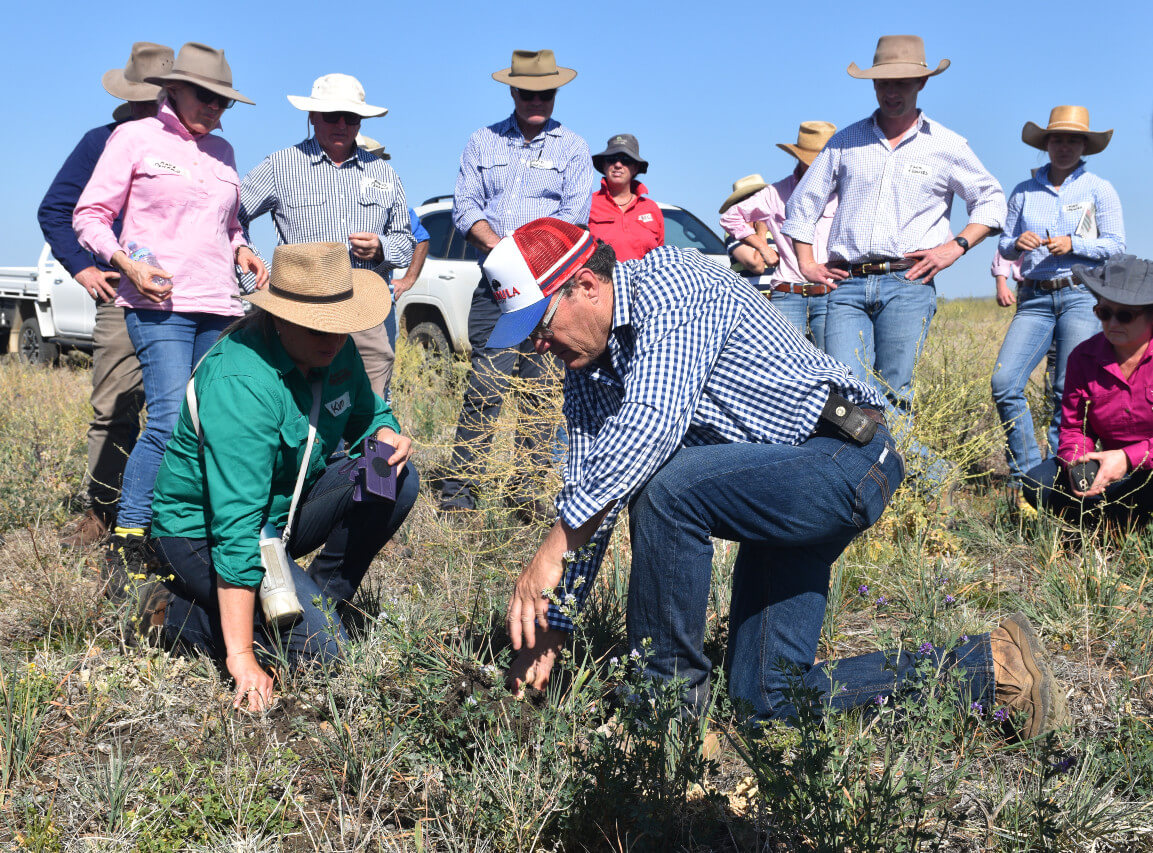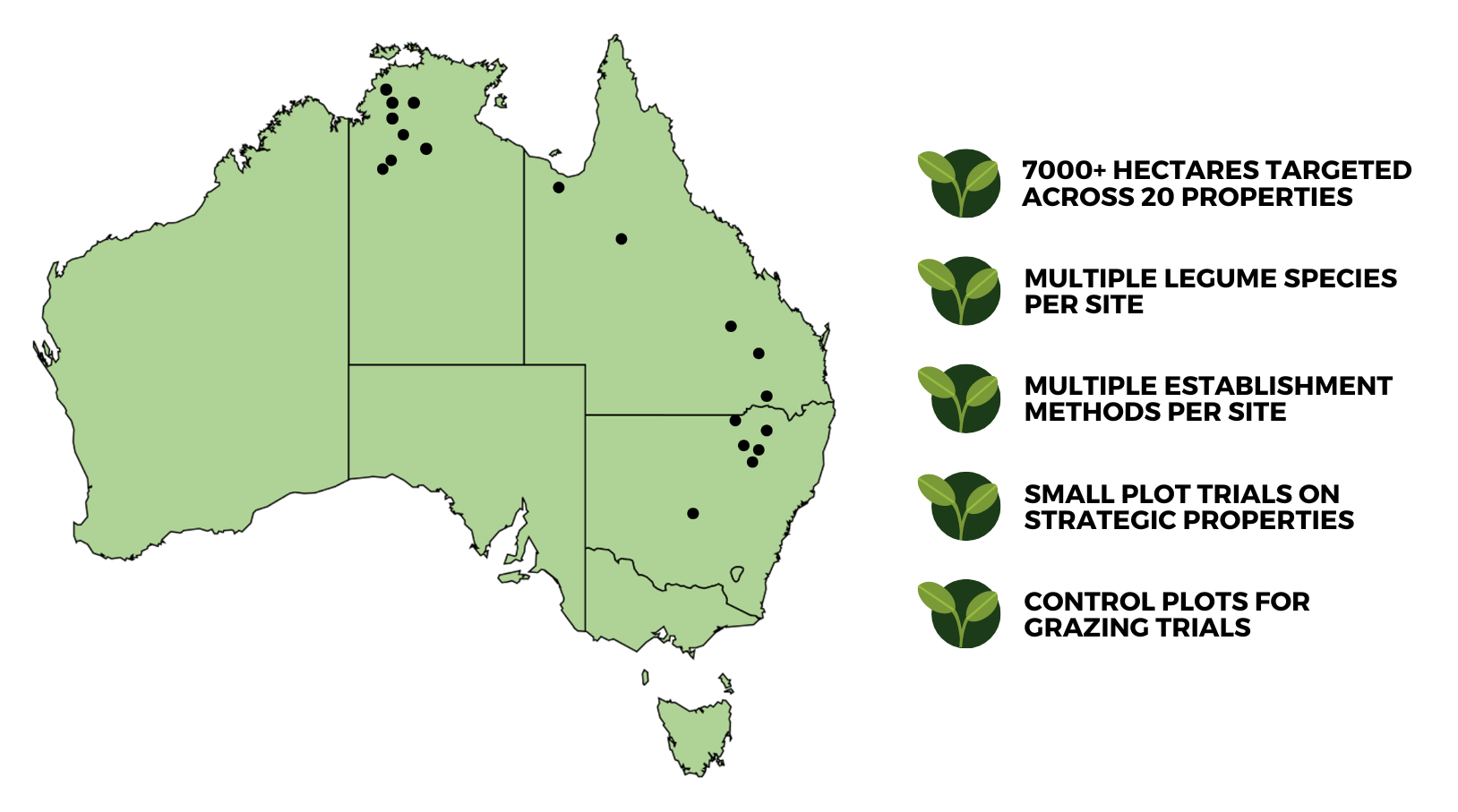Legumes in Tropical Pastures for Climate Resilience
Overcoming the Knowledge Gaps
The $3 million Overcoming the Knowledge Gaps project is funded by the Australian Government’s Future Drought Fund and aims to deliver producers with skills and knowledge to integrate deep-rooted legumes as a climate resilience strategy.

About the project
Previously led by Associate Professor David McNeill and now Dr Jonathan McLachlan, the project has seen over 7000 hectares of contrasting legumes sown across 21 participating properties in New South Wales, Queensland and the Northern Territory. Through this process, the project team is identifying and addressing the common constraints that producers face when trying to implement legumes into their grazing systems.
Over the course of the project, a number of educational workshops and field days are being held to build the knowledge around improving the resilience of northern grazing systems. Keep an eye on the Facebook UNE Agriculture Events page for upcoming events near you.

Producer case studies
This project will develop case studies to document the legume establishment process on each of our collaborating properties, along with a ‘how-to’ manual for producers to establish legumes on their own properties. These will be made available on this webpage at the end of the project.
Additionally, the project is developing a Producer Snapshot Series for more context on some of our participating properties. These will be published throughout the project below.
Producer Snapshot Series
New South Wales properties (written by Bob Freebairn):
There are a range of environmental and operational benefits to integrating deep-rooted legumes into a grazing system, including increased soil health, boosted animal productivity, reduced reliance on nitrogenous fertiliser and ecosystem resilience during times of drought. Legumes can take nitrogen from the atmosphere and donate it to the surrounding soil and microbes. Some deep-rooted legumes can also access nutrients that may be beyond the reach of shallower-rooted grasses and accumulate these nutrients in their above-ground biomass. When the legume plants die and decompose, nutrients and in particular nitrogen become available for other plants, including the companion grasses. The nutrition from the legumes feed the soil microbes, which in turn feed the surrounding plants and improve soil health. This nutrient cycling ultimately increases the resilience and productivity of the grazing system. Cost, and the time it takes to establish deep-rooted legumes can deter some graziers. However, while the adoption of deep-rooted legumes may require initial investment, such as seed costs, establishment costs and agronomic considerations, the long-term benefits, including improved productivity, cost savings, and environmental sustainability, make them an attractive option for beef producers in northern Australia. The successful integration of deep-rooted pasture legumes hinges on factors such as appropriate species selection, soil type, climate and management practices. Seeking guidance from local agricultural extension services or agronomists can offer valuable, site-specific recommendations tailored to the conditions prevailing in sub-tropical and tropical pasture systems. To be successful, it is important to understand the underlying biology and the risks. With a one-year extension for the project, sites will continue to be monitored through the 2024-2025 growing seasons. The team will measure legume types, densities, groundcover and available feed for grazing using on-farm assessments and satellite imagery, to get an idea of establishment success and persistence. Depending on the season, the team will aim to develop animal performance data, such as live weight gain per hectare, and will be looking at animal response and diet availability through faecal sample measurements. Measurements will finish in June 2025 and results will be available shortly after.Frequently asked questions about the project


